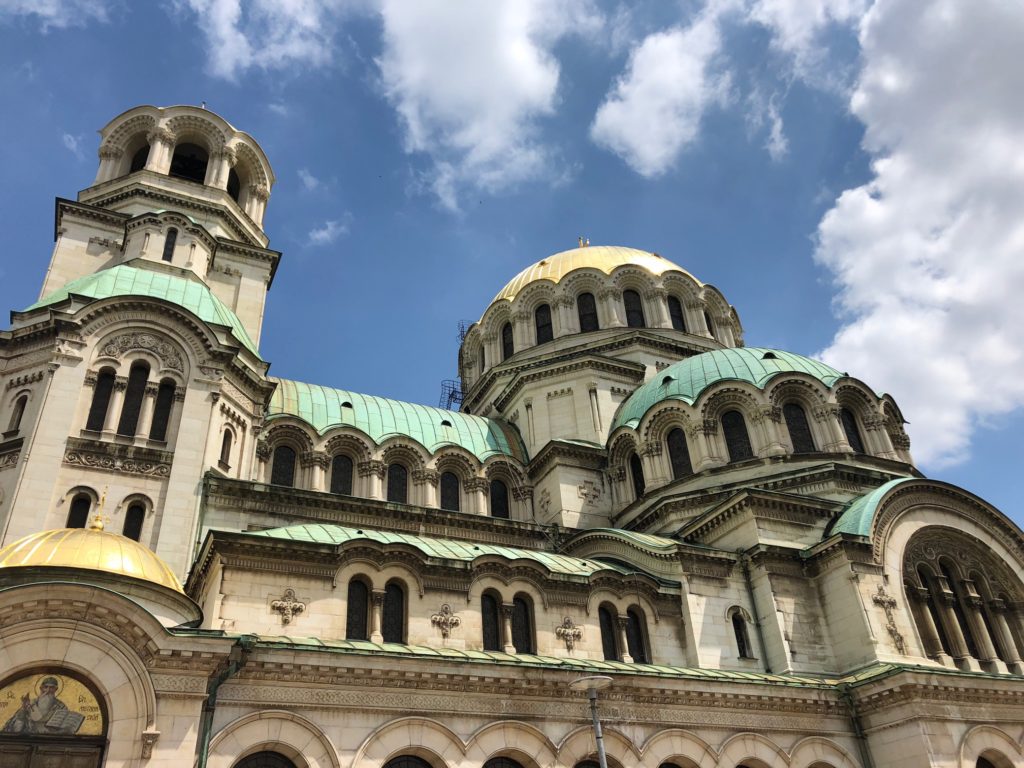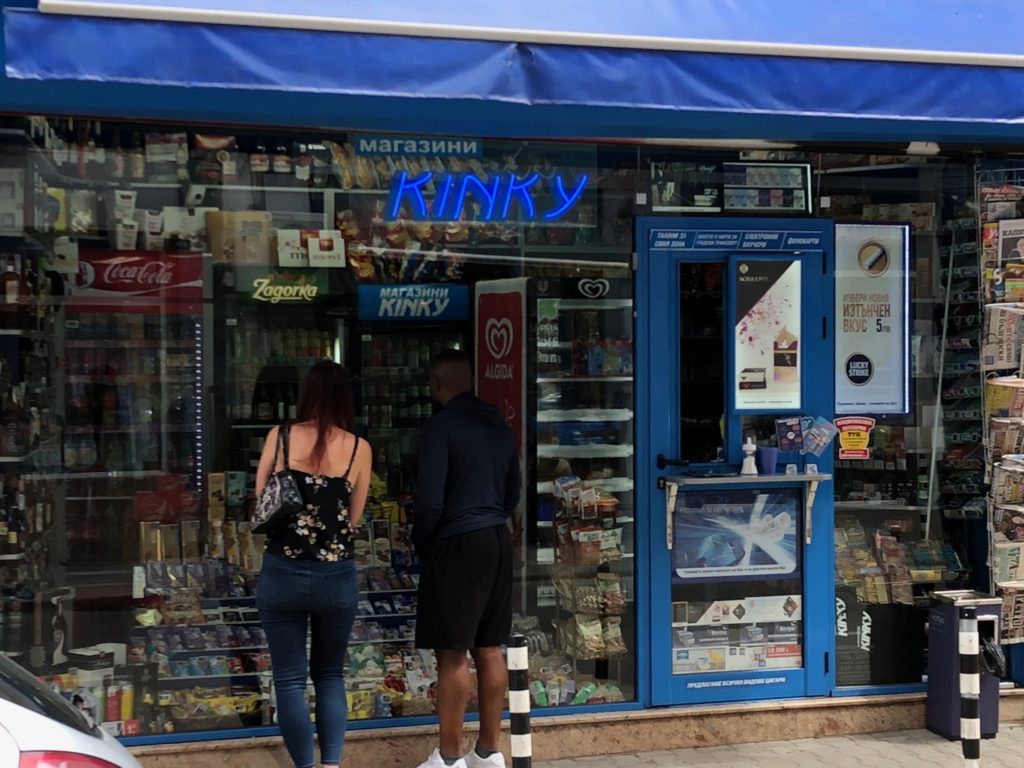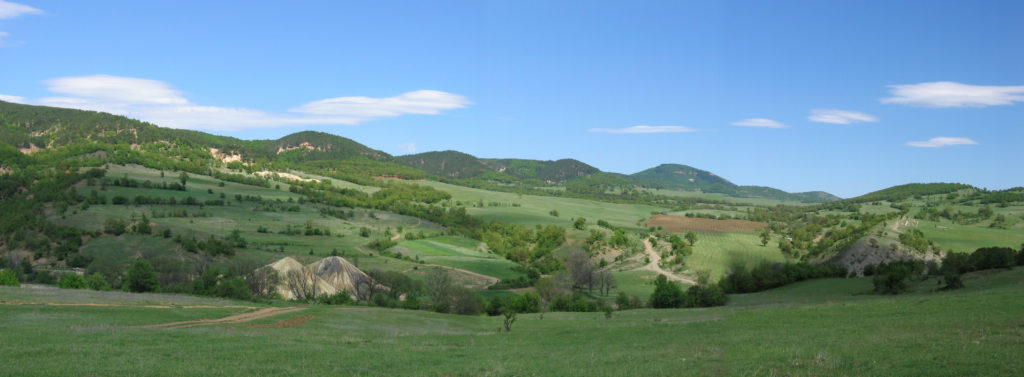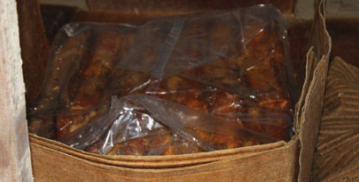Of Sticks and Stone
(I hadn’t planned on a Part 2 to my recent Yemeni post, but this story climbed out of my distant memories and seemed to fit.)
Western-style mineral exploration, as practiced by the typical Vancouver junior, is all about efficiency; how to maximize the data you can tease from the ground for each dollar spent. Or rather it should be about efficiency. Experienced hands know that when the markets get excited and frothy about metals, even Blind Freddy and His Dog can raise cash, as my colleague Graham would say. So I guess the concept of efficiency waxes and wanes in tandem with investor interest in resources.

The Communists, in contrast, were not known for efficient exploration. In last week’s post I took a look at the Communist-sponsored regional exploration of southern Yemen; a piecemeal and ill thought-out mess where the left hand had no clue what the right hand was up to.
Feeling Bloated
I’ve come across their bloated legacy in other countries too. In Iran, I was once pushed by a local group to hire an old Soviet-trained project geologist to manage some work for us. He tried to sell me on the idea of a huge Communist-style exploration camp, complete with a thin section lab, assay facilities and all the whistles and bells that a hundred geologists might need just to explore 30 miles of volcanic belt. The concept of a small 3-4 man team conducting a first-pass reconnaissance program was completely foreign to him.
In the mid 1990s I was based in Sofia, the capital of Bulgaria. Exploring there was fun. It’s a beautiful country, and culturally diverse; a consequence of the many invaders that have trudged through on their way from Europe to Asia, or heading for a spot of pillaging in Europe. The Romans, Mongols, Turks, Greeks and more recently the Nazi Germans all left their mark on the country.

Bulgaria also provided some good examples of how not to conduct exploration. I once took a rather spooky walk into an abandoned 1.2km-long adit somewhere near the Serbian border, which eventually cut a 50cm thick quartz vein with some minor copper and zinc mineralization. The equivalent of millions of dollars had been spent on tunnelling when a couple of bore holes would’ve done the job quicker and cheaper.
We had a tough job educating the senior government geological staff on what modern exploration was all about; the type of deals western companies would sign, the budgets and modern methodology – it was all very confusing to them. In stark contrast, the young geologists we hired were a different breed. Fast learners, well trained technically, and keen as anything to work, they soon adapted to operating in small mobile reconnaissance teams. In fact, they performed so well, we (Anglo American plc) were able to use them as a self-contained project evaluation team across the Tethyan belt of Europe and Asia.
Petelovo Is Calling
Around 1995 or ’96, I was tasked with reviewing a small gold project called Petelovo, in the Panagyurishte volcanic belt near the village of Poplintsi in southern Bulgaria. It’s a small, high-sulphidation gold deposit; geologically interesting, but lowish grade with a mix of sulphide and oxide gold ore to complicate the metallurgy. The deposit has been explored on and off for decades, but work recently stalled in the face of staunch local environmental opposition.

When we worked there, under the guise of Minorco, Petelovo hadn’t been touched since the 80s, and we walked on to a text book example of inefficient over-exploration. I could barely believe what had been done there.
The old maps showed 4.5km of adits and dozens of drill holes; the Communists had done millions of dollars worth of work to explore something that contained, at most, 16-million tonnes at about 1 gram per tonne gold and was clearly economically marginal. A Vancouver-based company would probably have drilled 20-30 holes, completed a resource estimate, run a quick economic model and walked away.

Homo Geologistus Perforo
After kitting up with underground gear –lamps and hard hats- we began work check mapping and channel sampling the adits. We’re both former mine geologists so the work went quite quickly. I cut my professional teeth underground and I still love it. Luckily, I’ve never suffered from claustrophobia. There’s something special about the smell of broken rock, the feel of being in it rather than on top of it, and mining gives you a unique 3D insight into mineral deposits.

By the time we got to mapping the third or fourth adit, we had a routine worked out. I’d map the geology and then mark the sample intervals along the adit wall with paint for Daniel. He followed along, chipping away with his hammer, bagging up the samples and labelling and tagging them. Local labourers removed the samples from the adit for shipment to the assay laboratory.
We’d noticed that the floor of the tunnel was lined with old boards and planks which were handy to stand on to work. They were stacked on top of the iron rails that had been left in place by the Communists. After years exposed to the subsurface damp, the wood was pretty rotten and regularly crumbled underfoot.
Sticks.
One afternoon, a couple of hundred meters in, I stumbled and my foot went through one of the boards. Shining my head light down, I could see that my right leg was ankle deep in an old cardboard box about 2ft by 1ft in size. It was lined with a plastic bag and was full of neatly packed sticks of dynamite.

Even worse, the dynamite sticks had been there for so long they were sweating nitroglycerin which had pooled at one end of the box, luckily not the end I’d stepped in. I knew straight away what it was; in the 1950s my dad was sent to the western desert of Egypt for National Service, blowing up old German munitions dumps and had described finding boxes of dynamite swimming in the stuff.
At that moment, I heard a crack from along the tunnel in Daniel’s direction. The same thing had happened to him and he was now standing in another box full of the capricious, liquid explosive.
There are various issues with nitroglycerin; its volatility makes it highly dangerous in a Wiley-Coyote-explosion-kinda-way, but it also causes really nasty headaches if you get it on your skin or inhale the fumes. A potent vasodilator, I can only describe the side effect of inhalation as being akin to somebody driving 6-inch nails into your forehead. I’d experienced it in South Africa in the 1980s on a small tin mine in the Bushveld complex, and wasn’t keen to suffer another bout. Discretion took over and I shouted to Daniel that we needed to get out of there.
Shit Shit Shit
Whispering shit shit shit to myself, I gingerly withdrew my foot from the box and pressed myself to the side of the tunnel, as far away from the tracks as you can get in a 2-3m wide adit.
Shining my head light down at the rails, I could see through gaps between the boards we’d walked on. There were perhaps a dozen or more rotten cardboard boxes full of waxy looking sticks hidden along the adit. The miners had simply left their dynamite underground, covered it up with wood and buggered off.
Daniel and I carefully made our way back down the tunnel, me treading in his foot prints so I knew I was safe, toward a spot where only bare earth was visible between the rails. We abandoned a bunch of samples as it was too dangerous to go back in. He told me a few years later that a North American company had actually restarted the project and had cleaned up the mess to access the full length of adits for remapping.
All in all, it was a salutary lesson in Communist-era inefficiency and waste that could’ve gone badly wrong for us.

